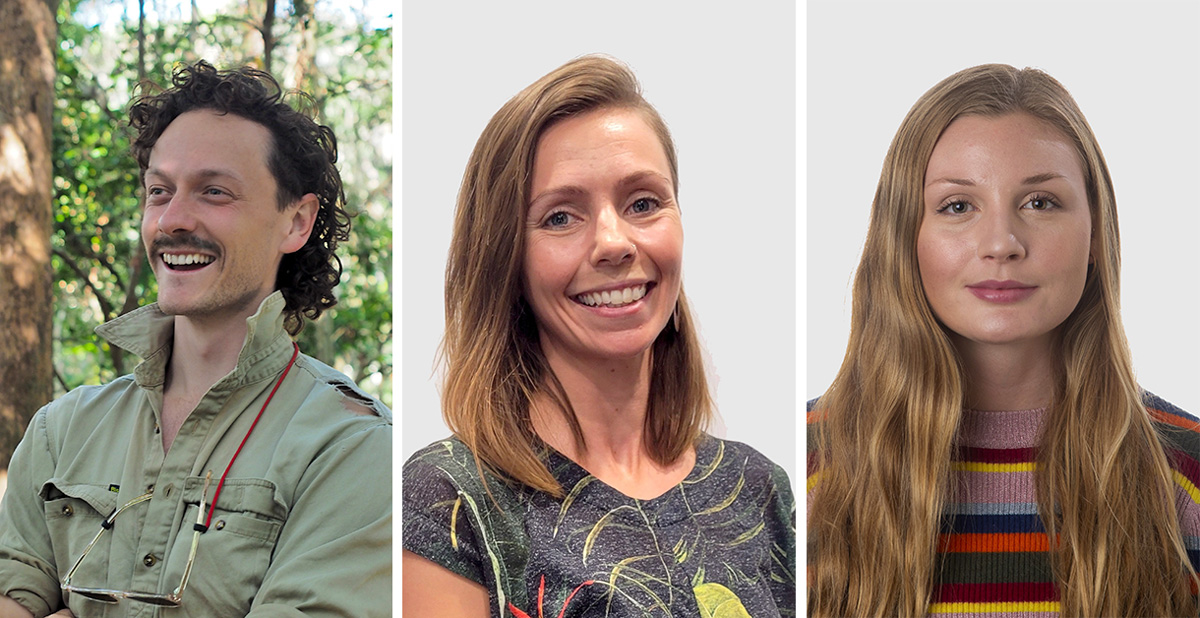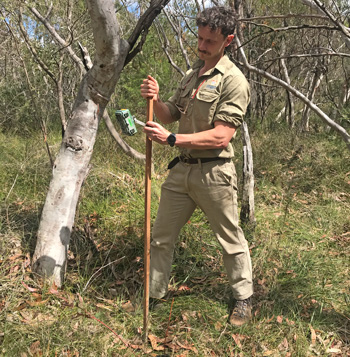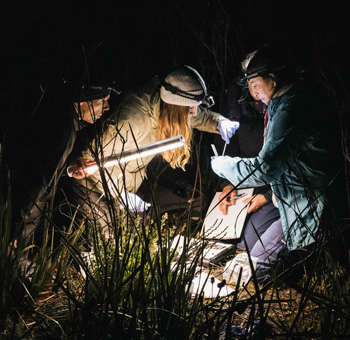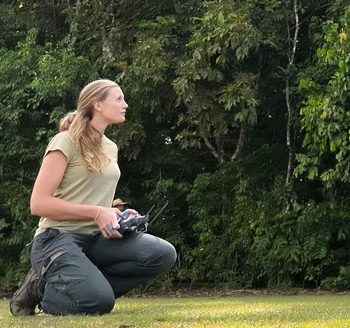
The Academy is pleased to announce the awardees of its 2025 Margaret Middleton Fund for endangered Australian native vertebrate animals, which supports early-career ecology researchers focused on endangered Australian native animals.
The recipients are Dr Patrick Finnerty from the University of Sydney, Dr Emily Hoffmann from the University of Western Australia, and Emmeline Norris from James Cook University.
Dr Patrick Finnerty: eastern quolls

Dr Patrick Finnerty was "absolutely thrilled" to hear that his project was selected for the 2025 Australian Academy of Science's Margaret Middleton Fund Award.
"These funds will be invaluable in aiding our research into bolstering endangered eastern quoll reintroduction success beyond-the-fence in mainland Australia. We are at a critical tipping point for many native vertebrate animals within Australia, and having the Academy support this research underscores its commitment to vital conservation work in Australia," Mr Finnerty said.
His research focuses on reintroducing endangered eastern quolls (Dasyurus viverinnus) into predator-free safe havens and exploring a myriad of beyond-the-fence reintroduction tactics and tools, which is regarded as a critical stepping stone for future rewilding success across mainland Australia. This means they are reintroduced into the broader landscape - beyond the safety of predator-proof fences.
Dr Finnerty's research underscores the urgent need to identify new strategies to restore endangered eastern quoll populations in Australia. Once widespread, the eastern quoll has become extinct across the mainland. A primary driver of the quolls decline was, and continues to be, predation by ever increasing numbers of introduced red foxes and feral cats. The overall aim of the project is to reintroduce a population of eastern quolls within the predator-free fenced Bannockburn Rewilding Sanctuary at Jervis Bay on the New South Wales south coast, with the goal of aiding future beyond-the-fence recovery efforts. Ultimately, the project will not only advance our understanding of eastern quoll ecology but allow us to explore ways to bolster the success of similar reintroduction programs 'beyond the fence' within Australia.
In 2023, Dr Finnerty was the recipient of the Academy's Max Day Environmental Science Fellowship Award, which supports early-career researchers working on the conservation of Australia's flora and fauna, the ecologically sustainable use of resources, and the protection of the environment and ecosystem services.
Dr Emily Hoffman: sunset frogs

Dr Hoffmann received this year's award for her research 'Frogs on fire: Rapid assessment of fire impacts on an endangered peatland endemic to inform prescribed burn practices'.
"I am incredibly grateful to receive the 2025 Margaret Middleton Fund Award. These funds will support a rapid assessment of the recent fire that affected over 30% of the limited distribution of sunset frogs. As an endangered relictual species confined to a small area of peatlands in southwest Australia, understanding the relationship between these frogs, their unique habitats and increasing fire is essential for their conservation," Dr Hoffman said.
Fire is a key process shaping Australia's ecosystems, yet the response of most biota to fire, particularly frogs, remains poorly understood. The endangered sunset frog (Spicospina flammocaerulea) is restricted to a small area of peatlands in southwest Western Australia - one of the most rapidly drying regions of Australia with an increasing risk of fire.
In April 2024, a fire burned over one-third of the species' entire distribution. Dr Hoffmann's project aims to assess the impact of recent fires on both sunset frog populations and their threatened peatland habitats, and to explore possible interactions with drought and disease.
Emmeline Norris: spectacled flying-foxes

Emmeline Norris is undertaking research that is utilising drone-based thermal imagery to accurately estimate abundance of the endangered spectacled flying-fox (Pteropus conspicillatus), and to model population trajectories.
"I am deeply honoured to receive the Margaret Middleton Fund from the Australian Academy of Science. This award will advance my research to establish a standardised, drone-based thermal imaging protocol for censusing the endangered spectacled flying-fox in north Queensland's tropical forests," Ms Norris said.
"By producing more robust population estimates, this project aims to strengthen conservation strategies for the endangered spectacled flying-fox, contributing to the resilience of tropical forest ecosystems and supporting national priorities for biodiversity conservation."
The endangered spectacled flying-fox - an important species for pollination and seed dispersal in tropical north Queensland - is estimated to have experienced population declines of over 75% in the past two decades. Traditional methods for monitoring endangered spectacled flying-fox populations, like manual ground counts, have struggled with accuracy due to the dense and inaccessible nature of their habitats.
Ms Norris's project aims to improve how researchers monitor and estimate abundance of spectacled flying-fox populations by developing a new method using drones equipped with thermal cameras. This technology may allow for more precise counts without disturbing the animals, and can reach areas that are otherwise difficult to access.
In enhancing our understanding of endangered spectacled flying-fox population trends, this research will help inform effective conservation strategies to ensure species persistence and the health of the ecosystems they support. The study also involves collaboration with local Indigenous ranger groups, ensuring the methods developed are culturally sensitive and inclusive.
About the Margaret Middleton fund
The Margaret Middleton Fund for endangered Australian native vertebrate animals was established in 2000 with Dr Margaret Middleton, who donated generously to this fund for many years. Dr Middleton was a long-time supporter of the Academy and early-career scientists, with the fund supporting more than 90 projects to date.
Applications for the Academy's 2026 awards and funding opportunities are now open.






